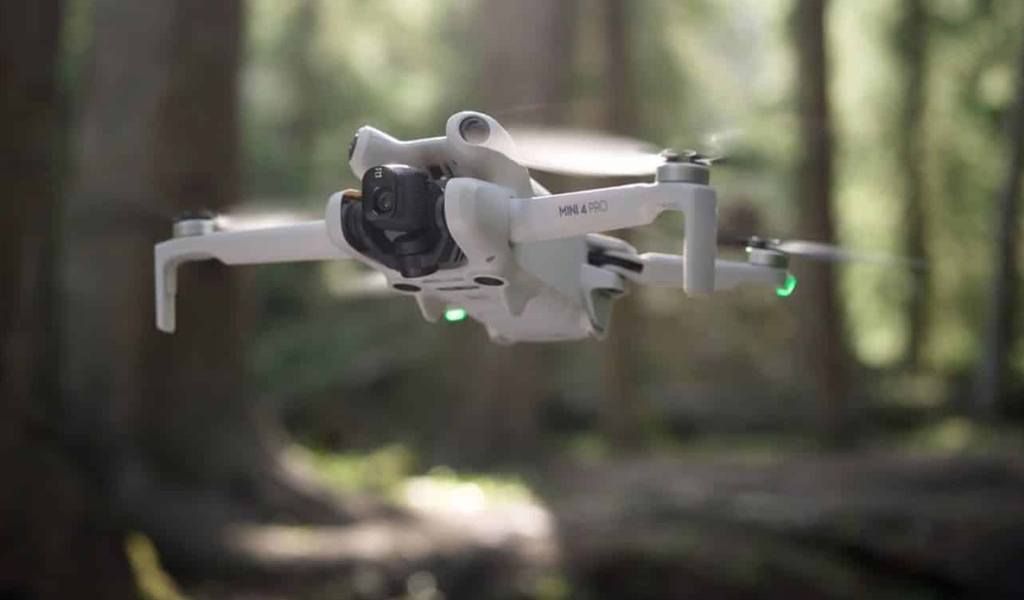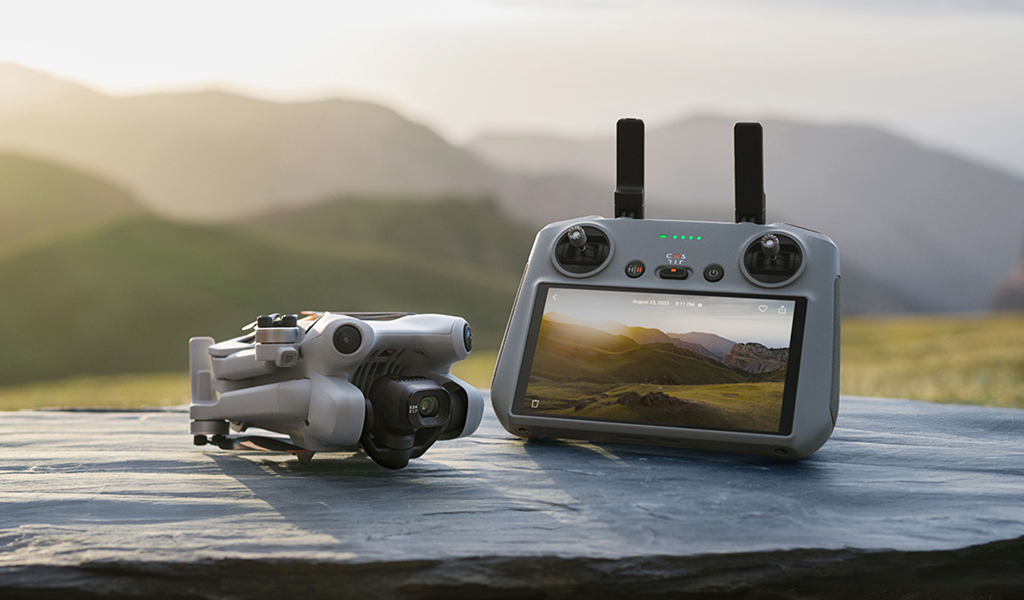
DJI launched a new drone as part of its smaller lineup in the Mini 4 Pro, equipping it with much better obstacle detection. The drone’s 249-gram weight means it doesn’t have to be registered under current drone laws, but just as importantly, it should prove more adept at staying intact and avoiding collisions in tighter spaces.
It features True Vertical Shooting to capture scenes directly below, and comes with a camera system on par with the larger DJI Air 3. It uses a different controller from the previous Mini 3 Pro, though still has the same battery, so you can swap them out if you have that model.
What you get with the DJI Mini 4 Pro

The single 48-megapixel main camera has a 1/1.3-inch CMOS sensor with a fixed f/1.7 aperture. A 3-axis gimbal gives it plenty of room to maneuver and even tilts up to 60-degrees upward. Since there is no telephoto lens, the camera uses a crop factor for 2x zoom for photos and up to 4x zoom for video. Footage maxes out at 60fps in 4K, or 100fps for slow-motion, or you can go up to 200fps in 1080p to do the same thing.
There is also 10-bit D-Log M, which is DJI’s own log profile for up to a billion colours if you want to take a more professional route in post-production. A Night Shots mode offers a broad ISO range all the way up to 12800, in case you want to take that on.
DJI’s newer OcuSync 4, or O4, transmission system is another improvement, not just because of the 20km range, but also because the signal can maintain a 1080p and 60fps visual while flying. Battery life stands at about 34 minutes of flight if you use the standard Intelligent Flight battery or up to 45 minutes if you have the Flight Plus variant. Both of them worked with the previous Mini 3 Pro, but one thing to keep in mind is the Flight Plus battery is heavier, thus pushing the Mini 4 Pro over the 249-gram threshold to avoid registration.
Tracking and obstacle avoidance

The big change here is the obstacle avoidance, or Omnidirectional Vision Sensing, which utilizes four fisheye sensors (front, top and bottom), downward binocular vision sensors and a 3D Time-of-Flight (ToF) sensor. This combination should dramatically improve how “smart” the drone is in navigating tighter spaces where obstacles abound, like in around trees, for instance.
DJI pilots will feel pretty familiar with the tracking and flight features. Quickshots is always a starting point, with Rocket, Dronie, Circle, Helix, Boomerang, and Asteroid as your options. FocusTrack combines Spotlight, ActiveTrack and Point of Interest to keep a subject in the centre at all times no matter how the drone moves. MasterShots also returns to take multiple shots from various angles and then stitch them together into a finished video with background music.
In a first, the Mini 4 Pro marks the first time DJI is putting in its Waypoints Flight function in a Mini drone. That way, you can plan a flight ahead of time and then repeat it anytime you want. Cruise Control is another that allows you to set the speed for the drone on a path for a smoother recording session.
Ready for takeoff
The DJI Mini 4 Pro is available now, bundled with a remote control, with Combo Pack, remote control and built-in screen, or in a Fly More combo pack. Check out the latest drones available now.




